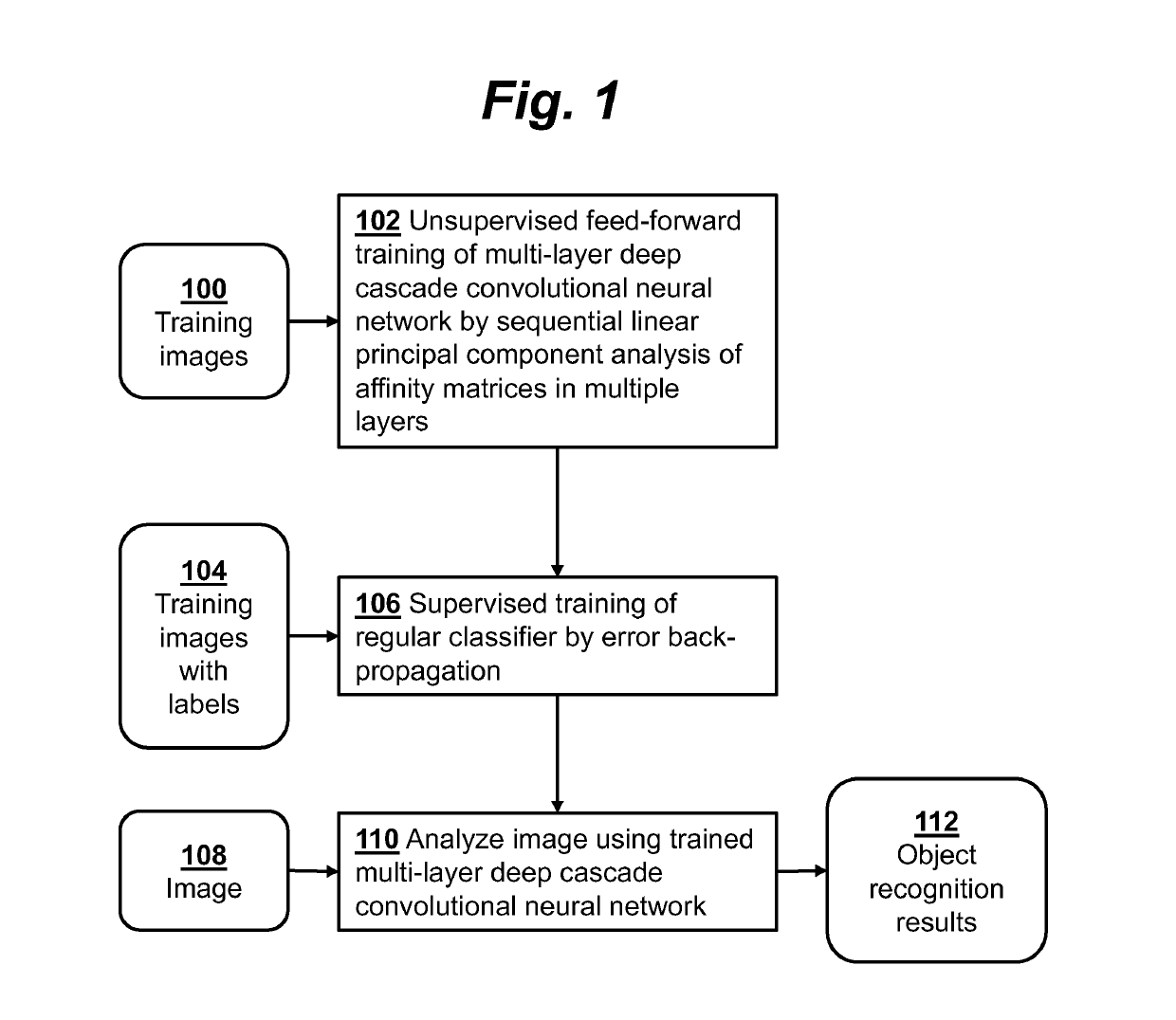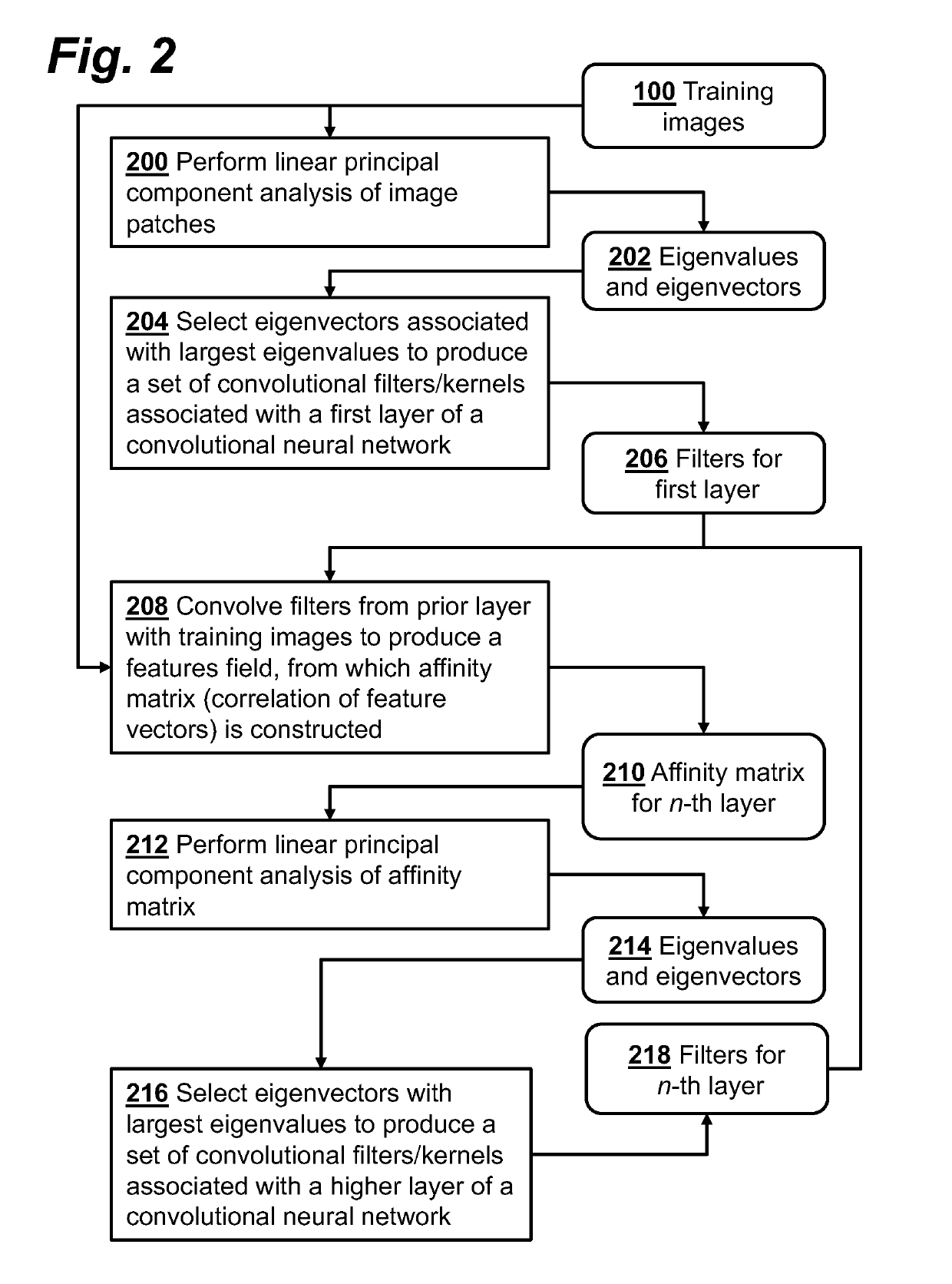Object recognition using a convolutional neural network trained by principal component analysis and repeated spectral clustering
a convolutional neural network and principal component analysis technology, applied in the field of image analysis for object recognition, can solve the problems of very fast feed-forward training of the hidden layers of the deep convolutional neural network (cnn), compared to the currently conventional error backpropagation method, and achieve the effect of high image analysis accuracy
- Summary
- Abstract
- Description
- Claims
- Application Information
AI Technical Summary
Benefits of technology
Problems solved by technology
Method used
Image
Examples
Embodiment Construction
[0012]Embodiments of the present invention provide a method for image analysis and object recognition using a convolutional neural network (CNN) that is trained using principal component analysis (PCA) of small image patches in the first stage, and PCA of an affinity matrix in the second and subsequent stages. PCA allows images to be represented as a series expansion in increasingly larger contextual geometric primitives, i.e., every patch can be expressed as a weighted sum of the basis patches, which are the eigenvectors that the PCA returns. High data reduction is accomplished by eigenvalue pooling. This feed-forward, unsupervised training of the CNN is extremely fast compared to conventional techniques that use computationally complex back-propagation on all hidden layers of the CNN.
[0013]FIG. 1 provides an overview of the main steps of object recognition using a convolutional neural network (CNN) according to one embodiment of the invention. In step 102, the hidden layers of the...
PUM
 Login to View More
Login to View More Abstract
Description
Claims
Application Information
 Login to View More
Login to View More - R&D
- Intellectual Property
- Life Sciences
- Materials
- Tech Scout
- Unparalleled Data Quality
- Higher Quality Content
- 60% Fewer Hallucinations
Browse by: Latest US Patents, China's latest patents, Technical Efficacy Thesaurus, Application Domain, Technology Topic, Popular Technical Reports.
© 2025 PatSnap. All rights reserved.Legal|Privacy policy|Modern Slavery Act Transparency Statement|Sitemap|About US| Contact US: help@patsnap.com


